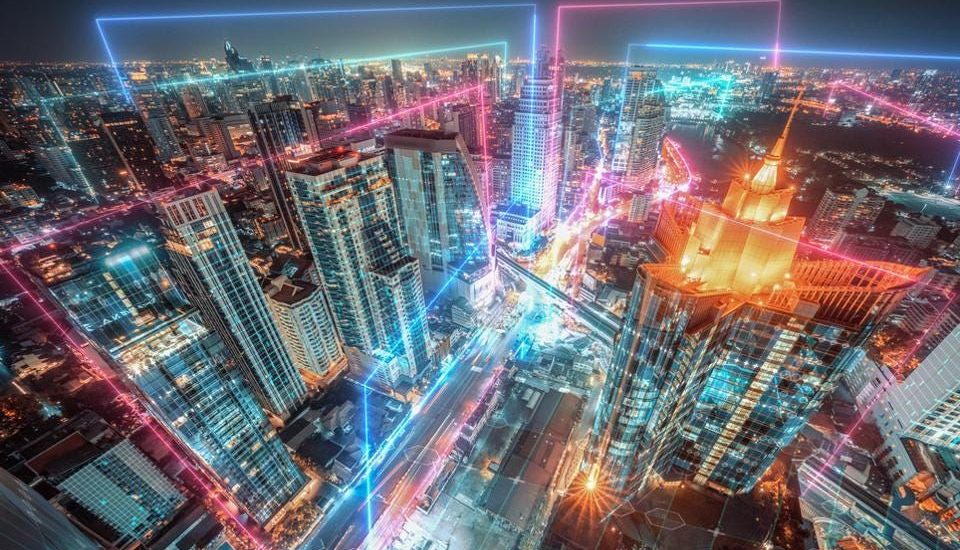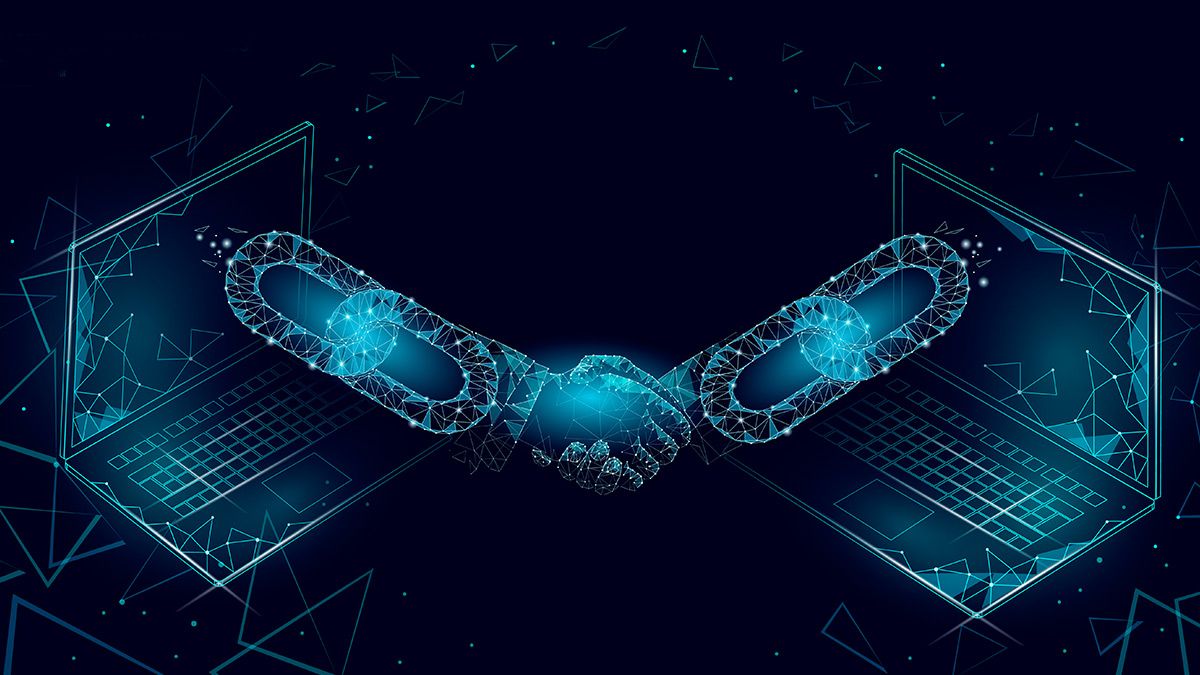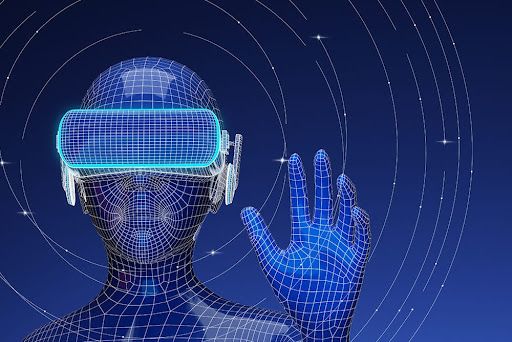- February 18, 2022
- Posted by: MasterAdmin
- Category: Cryptocurrency

By the end of 2021, people worldwide were shocked by Mark Zuckerberg’s Metaverse announcement. While there is some apprehension about what it means to have a virtual world coexisting alongside reality, it is truly a testament to how far technology has come.Did you know that an estimated 100 zettabytes of data will be stored on the cloud by 2025? For reference, a single zettabyte is equivalent to a trillion gigabytes. With the introduction of “cloud computing” in 2006, to cryptocurrency two years later, and now the metaverse, technology has been evolving at an astounding speed. The root aim of these innovations is to provide one key benefit: provide incredible customer experience. And they have achieved it as the world has only since become more fast-paced, efficient, and simply provided more solutions to various issues.We take a brief look at each of these technological advances and how they have helped bring forth a more enhanced experience for consumers in the digital space.Living on the Cloud SourceIn case you are still having trouble figuring out what “the cloud” is, it is simply a means for storing various files, software, and services you can access online instead of having to install and run them locally on your hardware. Google Drive, Netflix, and Google Photos use cloud computing technology to store files securely and provide easy access to consumers across various devices.If cloud technology alone was not impressive, the capabilities of multi-cloud infrastructures have truly pushed us to a more futuristic era. 2021 is considered the year of the multi-cloud, with nearly 81% of organizations already using two or more public cloud vendors. Multi-cloud strategies allow organizations to constantly develop and integrate new features as well as a myriad of options for the most efficient solutions. It is quicker, more efficient, and more flexible than relying on a single cloud server.When we narrow down the benefits of cloud computing in customer experience, there are a few distinct improvements facilitated by the technology.Enhanced AccessibilityEnterprises and other organizations are now able to provide their services and products around the clock to consumers. The cloud also enables the use of artificial intelligence (AI) for chatbots and smart advisors, making it easier for consumers to find what they want quickly.Centralized DataCloud technology acts as a centralized repository for all data recorded within the organization. This helps enterprises with big data analytics, valuable insights, and provides a fully integrated experience to consumers. It provides consumers with accessing various resources, products, and services from a single entry point.Personalized ExperiencesWith cloud technology, we have achieved never before seen personalized experiences for consumers. The cloud collects and stores immense amounts of data which can then be used in algorithms that aim to provide users with their likes and interests. It also personalizes the channels that consumers prefer, whether it is emails, apps, or text messages.Blockchains, Cryptocurrency, and You
SourceIn case you are still having trouble figuring out what “the cloud” is, it is simply a means for storing various files, software, and services you can access online instead of having to install and run them locally on your hardware. Google Drive, Netflix, and Google Photos use cloud computing technology to store files securely and provide easy access to consumers across various devices.If cloud technology alone was not impressive, the capabilities of multi-cloud infrastructures have truly pushed us to a more futuristic era. 2021 is considered the year of the multi-cloud, with nearly 81% of organizations already using two or more public cloud vendors. Multi-cloud strategies allow organizations to constantly develop and integrate new features as well as a myriad of options for the most efficient solutions. It is quicker, more efficient, and more flexible than relying on a single cloud server.When we narrow down the benefits of cloud computing in customer experience, there are a few distinct improvements facilitated by the technology.Enhanced AccessibilityEnterprises and other organizations are now able to provide their services and products around the clock to consumers. The cloud also enables the use of artificial intelligence (AI) for chatbots and smart advisors, making it easier for consumers to find what they want quickly.Centralized DataCloud technology acts as a centralized repository for all data recorded within the organization. This helps enterprises with big data analytics, valuable insights, and provides a fully integrated experience to consumers. It provides consumers with accessing various resources, products, and services from a single entry point.Personalized ExperiencesWith cloud technology, we have achieved never before seen personalized experiences for consumers. The cloud collects and stores immense amounts of data which can then be used in algorithms that aim to provide users with their likes and interests. It also personalizes the channels that consumers prefer, whether it is emails, apps, or text messages.Blockchains, Cryptocurrency, and You SourceIn 2008, a person under the pseudonym Satoshi Nakamoto released a publication detailing the concept of blockchain and cryptocurrencies. Since then, blockchain has evolved quickly to create:cryptocurrencies like Etherium, Bitcoin, Dogecoin programs like NFT markets, anti-money laundering tracking system, Smart Contractsand, act as a foundation for new technology like the MetaverseIBM conducted a survey in 2018 and found that 7 out of 10 consumer industry executives expect a blockchain production network to be a part of their business model in the coming years. Consumers gain various benefits from the use of blockchain such as:Smart ContractsConsumers are often hesitant to enter into a contract with a stranger. What is the guarantee that the second party will keep their end of the agreement? Blockchains like Ethereum and Solana overcome this issue through Smart Contracts.These self-executing transfer protocols track relevant events and actions related to the terms of agreement or contract. These contracts, once deployed, cannot be altered or taken back unless the entire community of the governance token holders reaches a common consensus.Data SecurityAs consumers flock towards e-retail, the issue of private information being leaked is a constant fear in their minds. However, now enterprises can encrypt their customers’ valuable information through blockchain technology. Customers can also maintain documents through cryptographic signatures to prevent tampering. Ensuring the safety of your consumers’ data can lead to a better customer experience.Business TransparencySince transactions on the blockchain are transparent, customers will feel more comfortable when engaging with a business. A transparent business is one that they can trust. Customers can view their transactions with a particular business at any time to see what their relationship with the business has been like. Diving Into the Metaverse
SourceIn 2008, a person under the pseudonym Satoshi Nakamoto released a publication detailing the concept of blockchain and cryptocurrencies. Since then, blockchain has evolved quickly to create:cryptocurrencies like Etherium, Bitcoin, Dogecoin programs like NFT markets, anti-money laundering tracking system, Smart Contractsand, act as a foundation for new technology like the MetaverseIBM conducted a survey in 2018 and found that 7 out of 10 consumer industry executives expect a blockchain production network to be a part of their business model in the coming years. Consumers gain various benefits from the use of blockchain such as:Smart ContractsConsumers are often hesitant to enter into a contract with a stranger. What is the guarantee that the second party will keep their end of the agreement? Blockchains like Ethereum and Solana overcome this issue through Smart Contracts.These self-executing transfer protocols track relevant events and actions related to the terms of agreement or contract. These contracts, once deployed, cannot be altered or taken back unless the entire community of the governance token holders reaches a common consensus.Data SecurityAs consumers flock towards e-retail, the issue of private information being leaked is a constant fear in their minds. However, now enterprises can encrypt their customers’ valuable information through blockchain technology. Customers can also maintain documents through cryptographic signatures to prevent tampering. Ensuring the safety of your consumers’ data can lead to a better customer experience.Business TransparencySince transactions on the blockchain are transparent, customers will feel more comfortable when engaging with a business. A transparent business is one that they can trust. Customers can view their transactions with a particular business at any time to see what their relationship with the business has been like. Diving Into the Metaverse SourceAs stated earlier, the Metaverse is, simply put, a virtual world that coexists with the physical world. Fragments of the Metaverse have already been around for over a decade with Second Life, Roblox, and Horizon Workrooms. A complete metaverse is one where users can seamlessly switch from the various digital worlds without having to constantly log on and off. It relies heavily on existing technologies, mainly Augmented Reality (AR) and Virtual Reality (VR).The Metaverse also allows for a virtual economy. Users can use cryptocurrencies to buy non-fungible tokens (NFTs), virtual real estate, or other digital assets within the Metaverse. It has immense potential when it comes to customer experience.40% of companies expect remote work to stay even after the pandemic ends. The Metaverse is beneficial for collaborative opportunities under these conditions. Microsoft Mesh with Hololens is already testing out 3D interactions with others users. The program makes use of an AR overlay in the real world. One possibility of this technology is to project holograms oneself into the real world for better remote interactions.Cryptocurrency in the Metaverse
SourceAs stated earlier, the Metaverse is, simply put, a virtual world that coexists with the physical world. Fragments of the Metaverse have already been around for over a decade with Second Life, Roblox, and Horizon Workrooms. A complete metaverse is one where users can seamlessly switch from the various digital worlds without having to constantly log on and off. It relies heavily on existing technologies, mainly Augmented Reality (AR) and Virtual Reality (VR).The Metaverse also allows for a virtual economy. Users can use cryptocurrencies to buy non-fungible tokens (NFTs), virtual real estate, or other digital assets within the Metaverse. It has immense potential when it comes to customer experience.40% of companies expect remote work to stay even after the pandemic ends. The Metaverse is beneficial for collaborative opportunities under these conditions. Microsoft Mesh with Hololens is already testing out 3D interactions with others users. The program makes use of an AR overlay in the real world. One possibility of this technology is to project holograms oneself into the real world for better remote interactions.Cryptocurrency in the Metaverse SourceMetaverse imitates reality to some extent. This includes having to engage in transactions of financial value. In the Metaverse, whether you want some Nike shoes for your avatar or you want to purchase a piece of virtual land, you will need some form of digital currency in exchange for your desired assets. These trades are intended to occur through the use of cryptocurrencies.Blockchain technology facilitates the development of decentralized games, apps, and other virtual communities that could be a part of the Metaverse. You can buy these cryptocurrencies with fiat currencies or mine them for ownership. Conversely, you can also exchange cryptocurrencies for fiat currencies. Cryptocurrencies are useful when building and developing economies within the metaverse.While the metaverse is still under development, there are several existing platforms that share this concept. Decentraland and The Sandbox are some of the more popular metaverse economies with native tokenomics. In November 2021 alone, the token for The Sandbox (SAND) saw an appreciation of 350%. During the same month, Decentraland’s MANA token was ranked as the 41st largest cryptocurrency in the market. Blockchain technology allows users to have ownership over their digital assets. Your crypto wallet would not just carry the digital currencies, but all the assets you own virtually. This means your avatars, avatar clothing, avatar animations, and virtual decorations are stored as valuables.ConclusionThe world is constantly evolving, and so is technology. From cloud technology to cryptocurrency and now the Metaverse, the stuff of science-fiction is slowly becoming our reality. We are one step closer to engaging in truly immersive experiences tailored to our needs. The Metaverse is currently estimated to be worth over $500 billion already, with the potential to be worth as much as $1 trillion eventually. Only time will tell what the next big digital transformation will look like.
SourceMetaverse imitates reality to some extent. This includes having to engage in transactions of financial value. In the Metaverse, whether you want some Nike shoes for your avatar or you want to purchase a piece of virtual land, you will need some form of digital currency in exchange for your desired assets. These trades are intended to occur through the use of cryptocurrencies.Blockchain technology facilitates the development of decentralized games, apps, and other virtual communities that could be a part of the Metaverse. You can buy these cryptocurrencies with fiat currencies or mine them for ownership. Conversely, you can also exchange cryptocurrencies for fiat currencies. Cryptocurrencies are useful when building and developing economies within the metaverse.While the metaverse is still under development, there are several existing platforms that share this concept. Decentraland and The Sandbox are some of the more popular metaverse economies with native tokenomics. In November 2021 alone, the token for The Sandbox (SAND) saw an appreciation of 350%. During the same month, Decentraland’s MANA token was ranked as the 41st largest cryptocurrency in the market. Blockchain technology allows users to have ownership over their digital assets. Your crypto wallet would not just carry the digital currencies, but all the assets you own virtually. This means your avatars, avatar clothing, avatar animations, and virtual decorations are stored as valuables.ConclusionThe world is constantly evolving, and so is technology. From cloud technology to cryptocurrency and now the Metaverse, the stuff of science-fiction is slowly becoming our reality. We are one step closer to engaging in truly immersive experiences tailored to our needs. The Metaverse is currently estimated to be worth over $500 billion already, with the potential to be worth as much as $1 trillion eventually. Only time will tell what the next big digital transformation will look like.



